Element 2.2
2.2 Safety risk assessment and mitigation
Risk assessment and mitigation is a key element in SMS. Once a hazard has been identified it needs to be considered in context, analysed for likelihood and consequence, evaluated to assess if ALARP and treated accordingly. Along the way stakeholders need to consulted, and the results reviewed to confirm ongoing effectiveness.
ISO 31000 (2018) is the industry standard in this whole process.
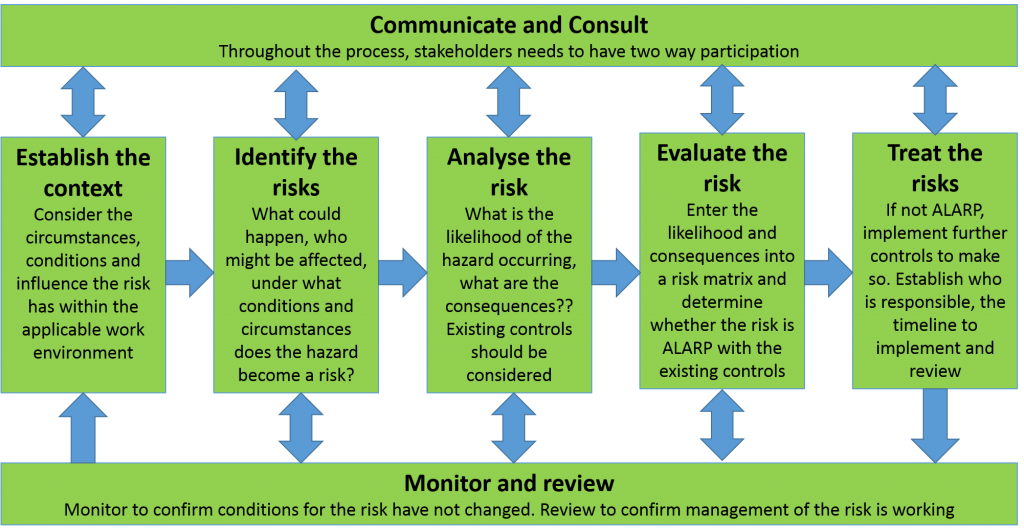
Consider the following basic example of the application of this process.
In isolation, a wedding ring may not be identified as a hazard. However in some environments where there is significant movement of both personnel and machinery, such as a maintenance hanger, it could be a hazard. This would not necessarily be the case in say an office environment. That is, the context is different.
In the hanger, personnel could be injured and machinery damaged if the ring was inadvertently caught. Consequences have been as extreme as severed fingers and critical mechanical components being damaged and requiring replacement. The likelihood is considered high in some workplaces. It may be that existing controls consist of no more than an awareness by the workforce of the potential harm to hands. This is the analysis of this risk.
The evaluation of the risk, when entered into a risk matrix, may make it unacceptable to management, in terms of injury leading to time off work and extra maintenance costs. Further controls may be implemented to treat the risk. They may include education and awareness training for the workforce; circumstances where the wearing of rings is prohibited; use of gloves; or any other initiative to reduce the risk.
It may have been an apprentice that communicated the risk. A senior LAME may have may provided input into solutions they had seen at other work places. Perhaps staff were made aware of an issue at a Toolbox meeting and informed management of their concern. The SAG may have recommended control measures and asked the workforce ask for their opinion. A change to the procedures manual, with emails and a communications campaign, may have informed staff of control measures. These all represent Communication and Consultation throughout the process.
Because it has now become a known risk, all personnel now be more conscious of both the potential for harm and the need to report if an incident occurs. The Safety Manager will be looking to see if implemented controls are working, and will review the process again if controls are not working. A formal review of the controls would occur as part of SMS document review. This would be the Monitor and Review of the risk management process.
The risk matrix
There are many types and styles of Risk Matrix; CASA can provide one, ICAO can provide another, and there are many others from a wide range of industries. They may not all look exactly the same, they may have different dimensions, however they all follow the same intent. In the same vein, the descriptions used for likelihood and consequence will vary, but this is not important. What is important is relevance to an organisation, a linear scale of intensity for both likelihood and consequence, and words pictures that adequately describe the stages of intensity change. Following is a basic risk matrix. The word pictures are basic – in fact they are based on the ICAO risk matrix model and the expanded word pictures are in the SMM. The red, yellow and green colours represent unacceptable, require management, and acceptable risk evaluation outcomes.
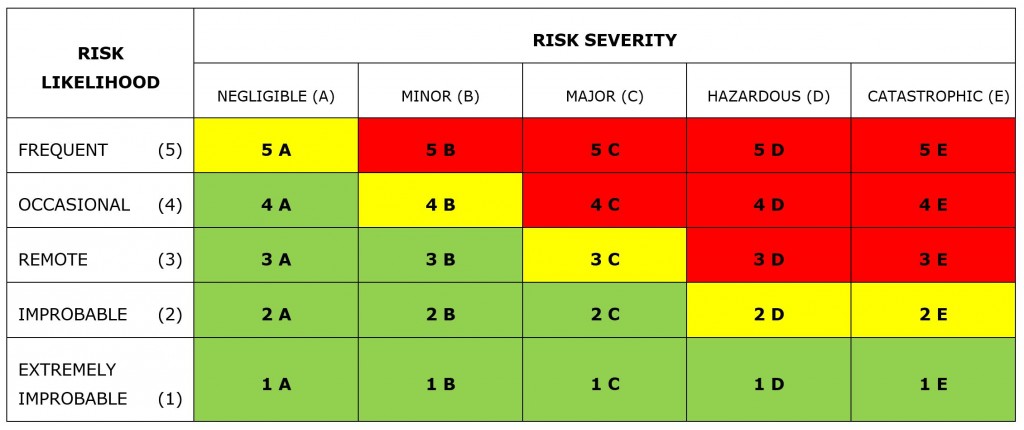
Now consider a much more complex risk matrix that subdivides both the likelihood and consequences to consider differing potential impacts and considerations. Note that the word ‘likelihood’ has been replaced with ‘probability’, and the numbers and dimensions are different to the above more basic matrix. Neither of these is problematic, nor affect the intent or meaning.
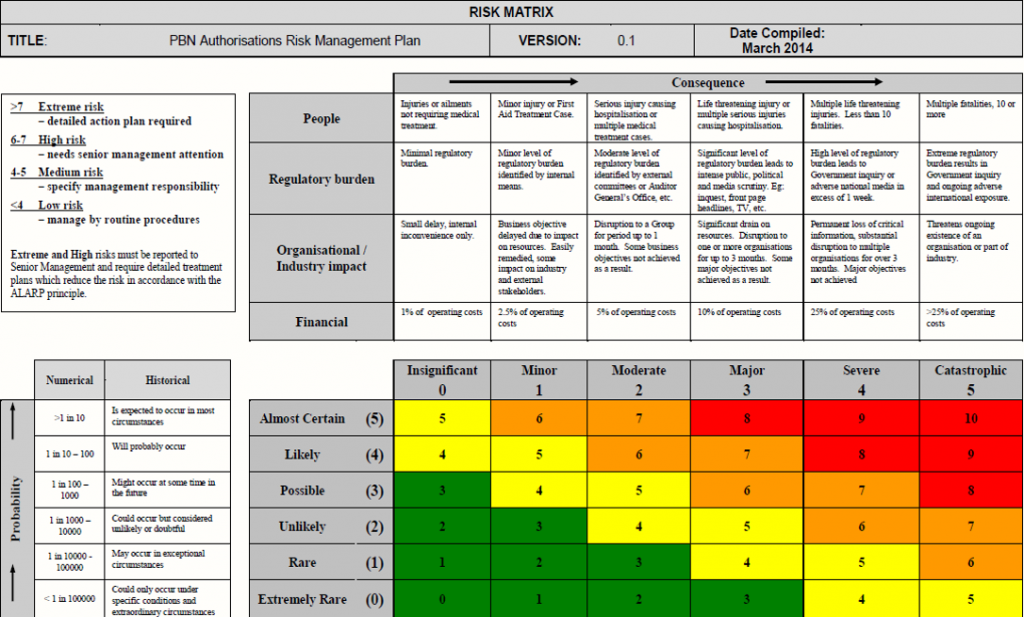
Another example is shown below.
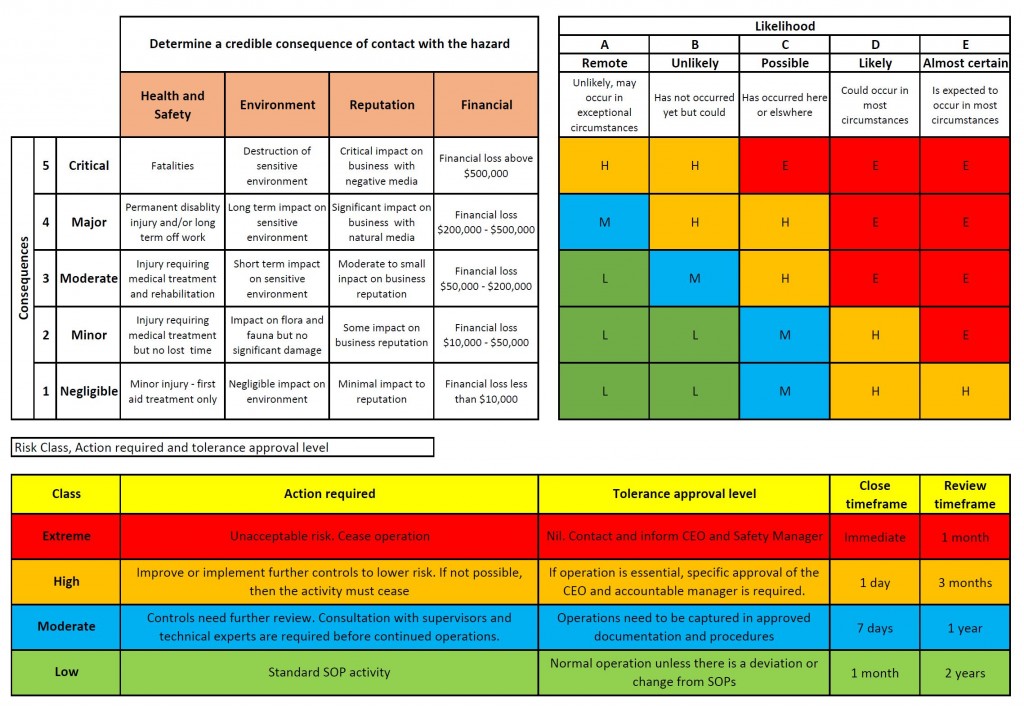
And a further example – this time without a Matrix, instead managed by algorithms.

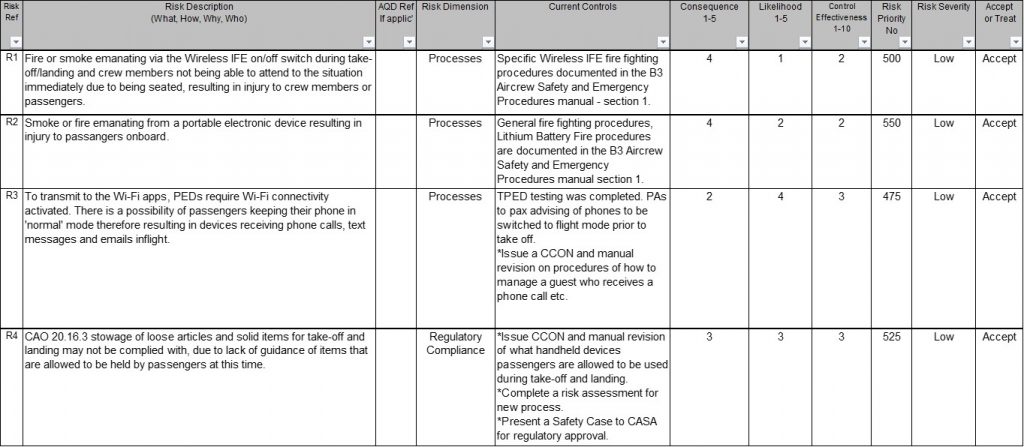
The bottom line is that organisations need to choose an appropriate risk matrix, with associated word pictures (or create their own), and demonstrate the use of it in the risk management process. The complexity needs to be relevant and functional for their operations.
Risk management 101
Risk management work sheets are the most effective way to record and document the risk assessment and mitigation process.

The aim of a risk assessment is to reduce the risk to ALARP – that level that is acceptable to the organisation for continuing operations. Mitigation will require management, but not all risk is bad. Acceptance and systematic management of risk is required for an organisation to balance safety with profitability and efficiency.
Organisations need to be realistic about controlling and mitigating risk. In reducing risk to As Low As Reasonably Practicable (as opposed to Possible), cost and realistic operations need to be foremost in the process
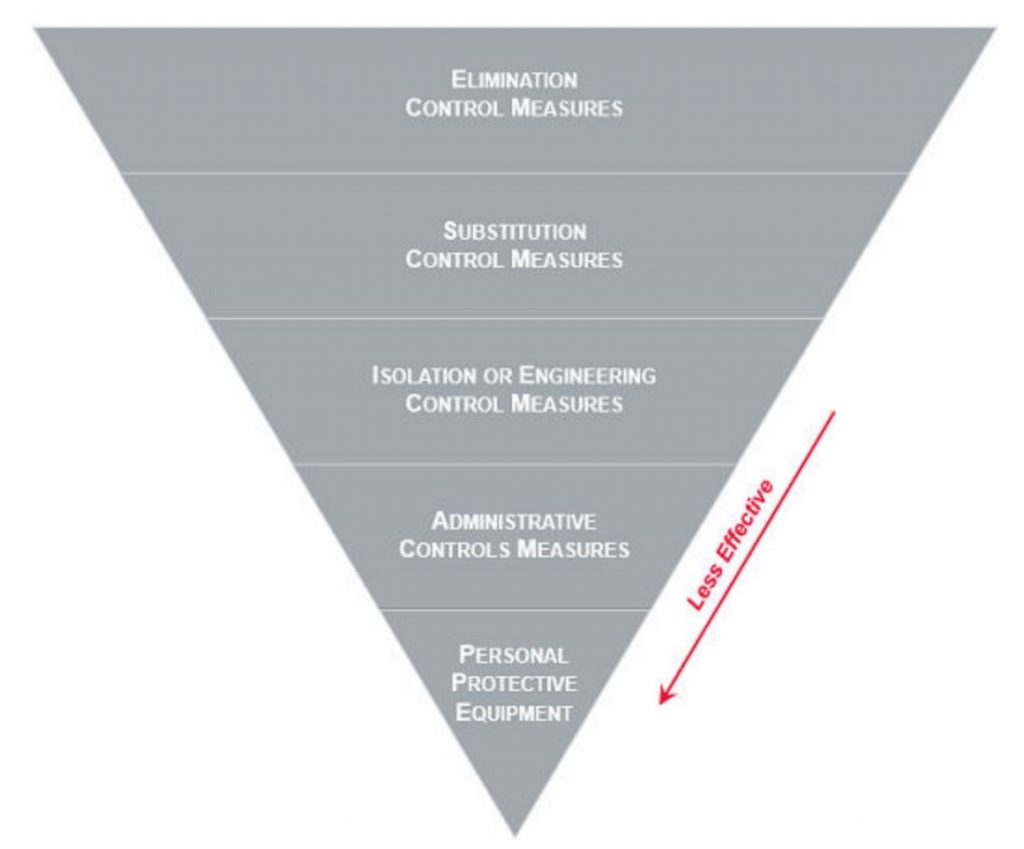
Bowties
Bowtie models are one of the most common way of a visual representation of Safety Risk Management The UK CAA lists ‘The Significant Seven’ aviation likely causes of an accident or incident.
Operational risk management plans
When a company conducts an activity where there are multiple hazards and associated risk assessments, a Risk Management Plan (RMP) is used to capture the these hazards and risks.
This is often called A Safety Case.
The cover sheet of a safety case might include the following:
- What the activity is
- What the aim of the risk assessment is
- The organisational significance of the activity
- Who the internal and external stakeholders are
- Any common assumptions and definitions.
The organisation must then consider the hazards, the outcomes from the risk analysis and evaluation, the treatment of risks, and the creation of any residual risks.
A Risk Management Plan can be considered a ‘one stop shop’ for the risk management process. The need for a RMP may be identified through a report; management of change; an SRC or SAG outcome; or a whole range of other activities that may highlight risk to the organisation.

Example of Operational risk management (Safety case) coversheet
